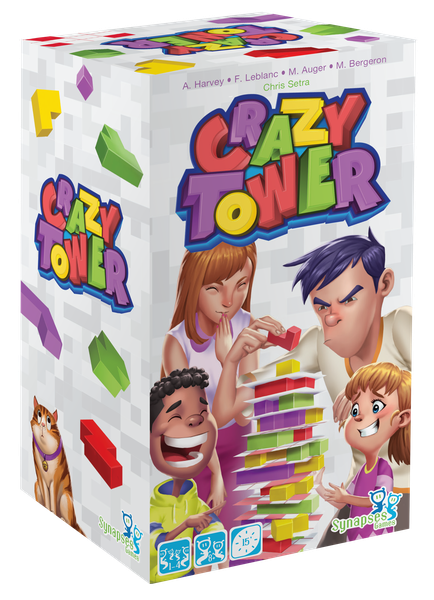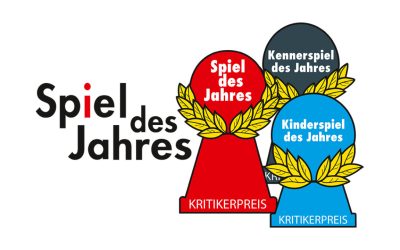Dexterity Games

Last month I built a play structure at our cabin…
Similar to the ones you often see in people’s back yards, featuring a large tower with a platform that can be climbed in various ways. As far as materials were concerned the whole thing came as a large pile of lumber, a big bag of screws and 10-page booklet of instructions and plans. My job consisted of cutting the wood to various lengths and then screw them together piece by piece, making sure that the resulting structure was straight, solid and safe. The whole process lasted about 3 days and I can say that I loved every hour of it. I remember the sense of pride that I felt when it was done. I would stand back, look at it and think: “I made this.”
Later on, I asked myself why this process was so enjoyable. My conclusion was that this was a process that required very little analysing or complex planning. All I had to do at any given moment was to place a piece here or attach it there. Not a lot of room for over-thinking or second guessing. A chance to relax the analytical part of mind and allow myself to simply live in the moment and to instantly observe the result of my labour.
The board gaming world offers us a genre of games that evokes a similar experience in a smaller scale – Dexterity games. By definition, dexterity games are games where players need to reach their goals by using their manual dexterity or hand-eye-coordination. At their core, these games are all about using our hands (or other body parts) to accomplish a challenging action. Depending on the game, this could include stacking blocks or pieces on top of each other, flicking bits towards a target, or carefully removing something from a larger structure. The most commonly known games of this genre would be Jenga, Crokinole or Pick-Up Sticks.
There are a few fundamental characteristics that set dexterity games apart from most other board games. Most notably, they rely far less on strategy or long-term planning as a path to victory. They challenge the players to properly exercise their motor skills and their capacity to stay calm under pressure rather than their ability to plot or outwit each other intellectually. This often leads to a much simpler set of rules which can make dexterity games an attractive entry point for people who do not enjoy a lot of complexity in game play. Most of the time dexterity games are relatively short as far play time is concerned. It is not uncommon for some games to only last 15 or so minutes. Of course, a good game will make you want to try again, and again…
Dexterity games can be a great way to enjoy time together for many reasons. For kids or seniors, they can encourage the use of fine motor skills. They make great party games as they are fairly inclusive and offer a low complexity entry point. I mean, let’s be honest, who can resist a game where you can physically build or tear down something. Plus, they can be a great equalizer when it comes to play between different generations. Children can be as good or better in using their motor skills than adults and vice versa.
Even though most dexterity games might lack the depth of strategy other games might offer, they provide a feeling of pure and instant joy and excitement that other games can’t touch. Unlike strategy games which can take a couple of hours to unfold, dexterity games build and resolve tension and excitement quickly and immediate. There is something distinctly human and primal about that experience and I strongly recommend that you will give one a try.
Here are some of my favourites:
RHINO HERO
2-5 players, ages 5 and up
This game would be considered a classic in the dexterity game genre. It presents players with a heroic rhinoceros who is eager to climb a tall building. First, though, you need to construct that building.
Players each start the game with five roof cards, and they take turns adding walls and roofs to a single building. On a turn, you first place walls on the highest floor, then you choose a roof card in your hand and place it on the wall. Each roof card bears markings that indicate where the next player must place walls on the card. In addition, some roof cards force a player to perform special actions, such as placing a second roof, changing the direction of play, or moving Super Rhino to a new location on the tower. Keep your hands steady because you don’t want it to collapse on your turn!
TOKYO HIGHWAY
2-4 players, ages 8 and up
In this visually stunning game, players compete to place all of their cars on the road — but to do that they will first have to build the roadways!
Over the course of the game, players construct columns of varying heights by using the 66 squat cylinders in the box, then connect those columns with sticks that serve as roadways, with the columns not necessarily being the same height when connected. Once you have a highway, you can possibly place one of your ten cars on it.
Deceptively elegant and more involved with each passing turn, Tokyo Highway is not only an excellent game but an eye-catching conversation starter! Will you be the first to place all of your cars?
CRAZY TOWER
1-4 players, ages 8 and up
With shaking hands and a fast-beating heart, you prepare to add another block to the teetering tower. Will it continue to stand, or topple to the ground? The tower sways for a second, then rights itself. It’s going to stay standing, at least for now.
Players work together to get rid of their blocks and build a safe, stable structure. All of them, except for one that is. One player takes on the role of the Traitor, looking to deviously make a building that will collapse on another player’s turn. Will they succeed, or will the Tower stand the test of time? Either way, you can bet it’s going to be crazy!
STAXIS
2-6 players, ages 6 and up
The object of the game is to balance all of your wooden sticks on a continually evolving structure without making it topple over. Each player takes a turn to roll the die which will show a 1 or 2. The die roll determines how many other sticks the one that you place may touch. If you make any sticks fall off, then you have to pick them up and add them to your own.
The winner is the first to have placed all of their sticks or the player preceding the one to make the whole structure fall over.
MENARA
1-4 players, ages 8 and up
In this uniquely co-operative dexterity game, players use pillars and wondrously shaped temple floors to build a spectacularly soaring structure full of nooks and crannies. Cooperation and static skills are in demand since for each mistake in construction, you have to add another floor to the temple.
A steady hand, an alert mind, and mutual assistance can help you successfully complete what seems to top out at dizzy heights…
Are you intrigued to try a dexterity game? Here are my top suggestions:
‘Spiel Des Jahres’ Winners 2021
Arguably the most important event with regards to the world of board gaming is ‘Das Spiel,’...a fair that is held each October in the German city of Essen. Exhibitors and guests from all around the world gather for 4 days to present and try all of the new and exciting...
Word Guessing Games
The philosopher Friedrich Nietzsche once said:...“All I need is a sheet of paper and something to write with, and then I can turn the world upside down.” Even though I am almost certain that he did not say this with regards to board games, part of me wonders and...
The History of ‘Ticket to Ride’
What defines a great board game?...It is its theme, the accessibility and elegance of the rules, the design and production of the components, the depth of strategy, or the level of enjoyment one experiences when playing it? I believe it is a combination of all of...







